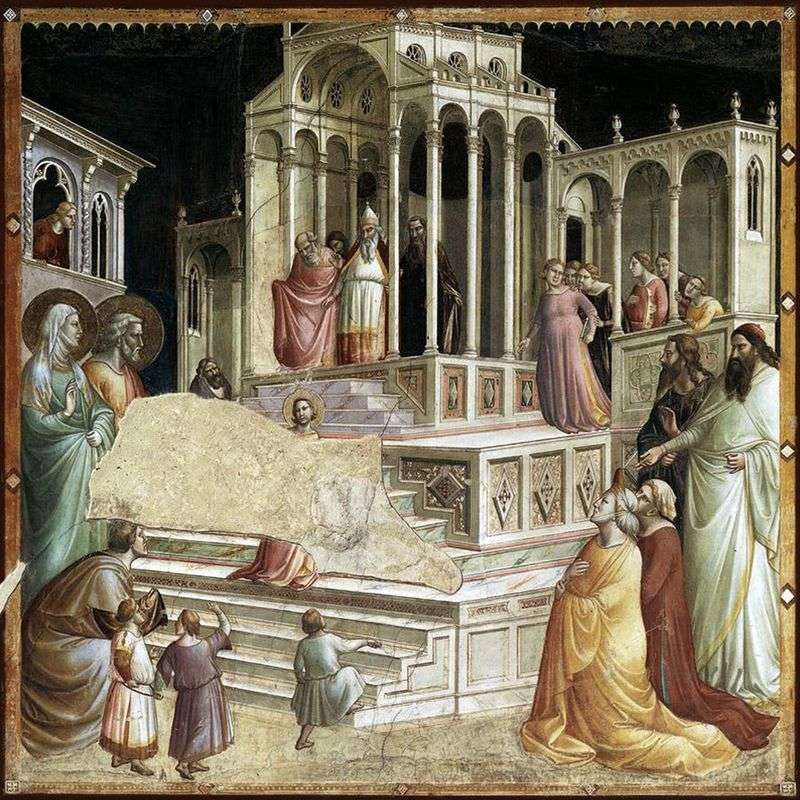
The family of Florentine bankers Baroncelli instructed Taddeo Gaddi to paint a family chapel in the Franciscan church of Santa Croce with frescoes. Frescos represent the life of Mary. The picture reproduced here is in the bottom row on the eastern wall. Her theme is derived from the apocryphal Gospel of Jacob, according to which the parents of the little Mary, faithful to her vow, after reaching the girl three years, brought her to the Jerusalem temple, so that she was brought up there under the guidance of the high priest.
This theme, like the betrothal of Mary, was widely spread under the influence of the cult of Mary, which was growing in the Gothic art. Giotto in the Padua chapel Del Arena composed a little figurine scene: the mother leads Maria along the steps of the temple and passes it to the high priest, behind whom Maria is waiting for future co-students.
Taddeo Gaddi wrote this scene more solemnly and large. The picture is almost entirely occupied by the image of the Jerusalem temple. On the first flight of the staircase leading to the highly elevated three-roomed hall with columns of white marble, stands a small Maria; she looks back at her parents. The surrounding empty space and the whiteness of the wide marble steps give its appearance a special significance and create a mystical atmosphere.
The remaining characters are located at the edges of a large circle, the center of which is the child. All are moved and delighted with looking at Mary. The expectant high priest and his retinue were executed in much smaller sizes – so the artist sought to convey the perspective.
It is interesting to place the temple – its upper corner is in contact with the frame, that is, it is in the plane of the picture, in which the further development of the idea of Giotto is manifested. However, the genre details, the prevalence of architecture, the complex image of the perspective, and the slender forms distinguish it from the world of Giotto.
The future schoolmates of Mary look out from the right wing of the building adjoining the temple with curiosity. The meek faces of the characters, their graceful soft movements, the picturesqueness of the paints, richly modeled by chiaroscuro, represent already more recent, post-Zott artistic aspirations. In the Louvre of Paris, a sketch for this painting is kept, either by the master himself, or by his fellow at the workshop. On it the staircase is continuous, the steps are not interspersed with the rest areas, the figure of Mary is monolithic, in her right hand she holds the book.
Compared with a more powerful, dramatically more condensed composition of the sketch, the composition of the fresco is more lyrical and airy. The virtuosic transfer of space in this picture had a great influence on contemporaries and masters of a later period, as exemplified by the early fifteenth century. a miniature on the same subject in the Duke of Berry watchtower, written by Paul de Limbourg.
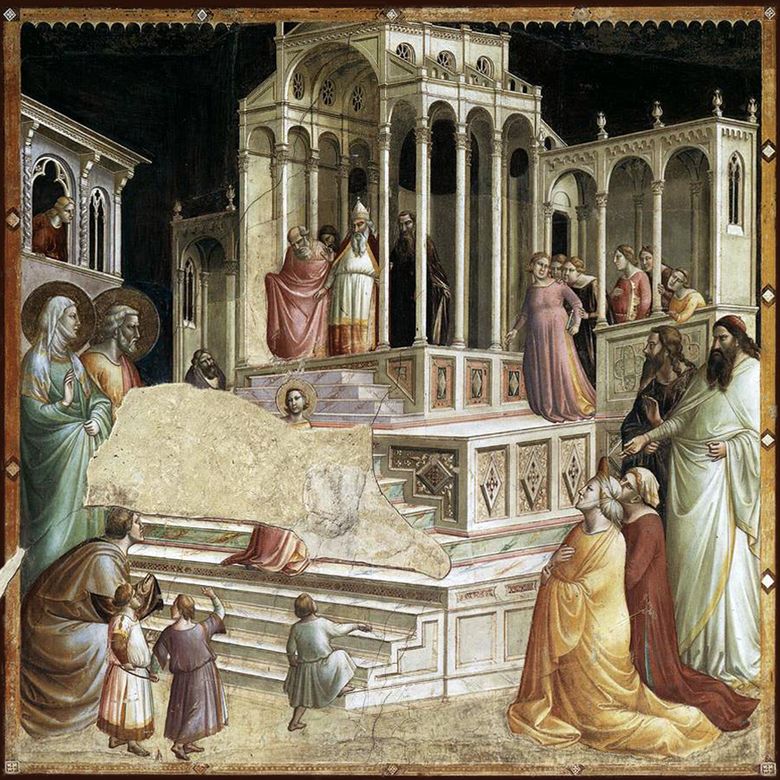 L’introduction de Marie au temple – Taddeo Gaddy
L’introduction de Marie au temple – Taddeo Gaddy Evangelism to the shepherds by Taddeo Gaddi
Evangelism to the shepherds by Taddeo Gaddi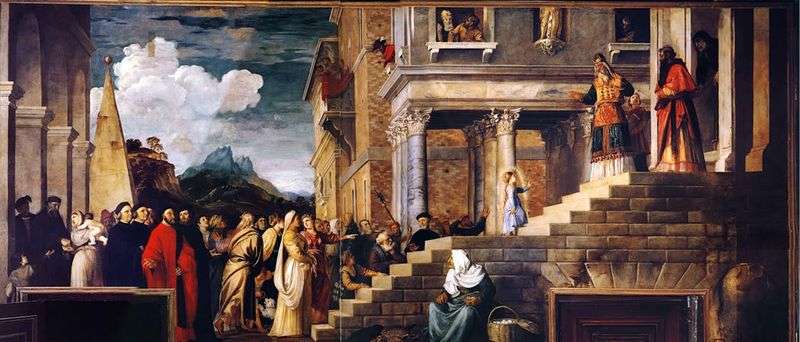 Introduction of Mary in the Temple by Titian Vecellio
Introduction of Mary in the Temple by Titian Vecellio Introduction to the Temple
Introduction to the Temple Introducción de María al templo – Taddeo Gaddi
Introducción de María al templo – Taddeo Gaddi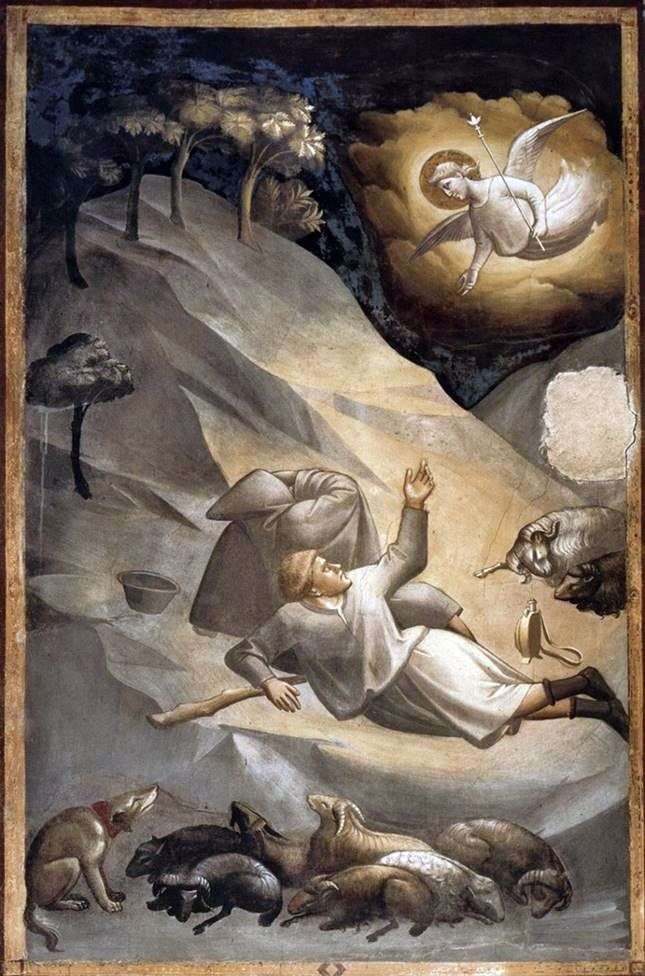 Evangelismo a los pastores – Taddeo Gaddi
Evangelismo a los pastores – Taddeo Gaddi Introduction to the Temple of the Blessed Virgin by Paolo Uccello
Introduction to the Temple of the Blessed Virgin by Paolo Uccello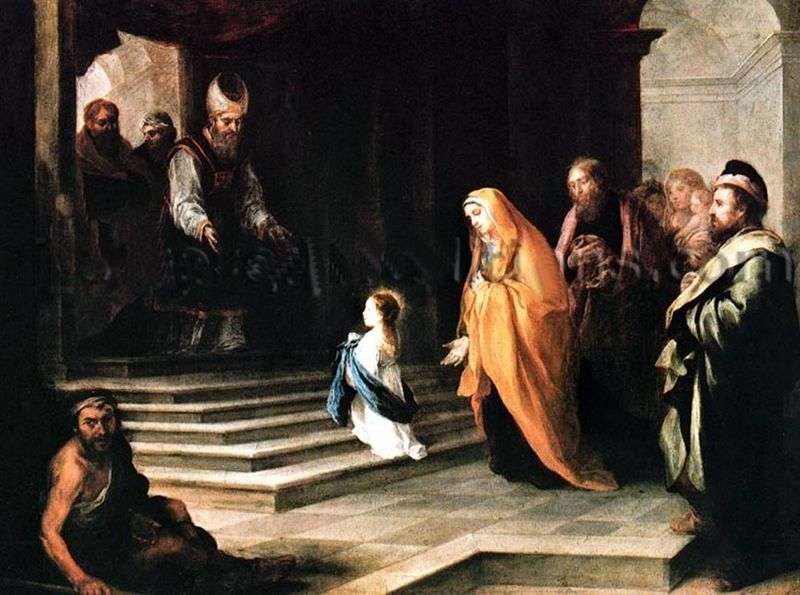 Introduction of the Virgin Mary to the Temple by Bartolomeo Esteban Murillo
Introduction of the Virgin Mary to the Temple by Bartolomeo Esteban Murillo